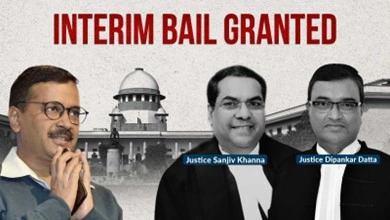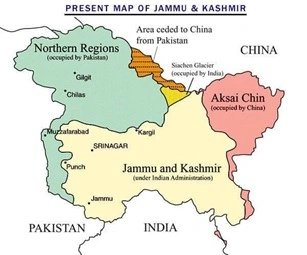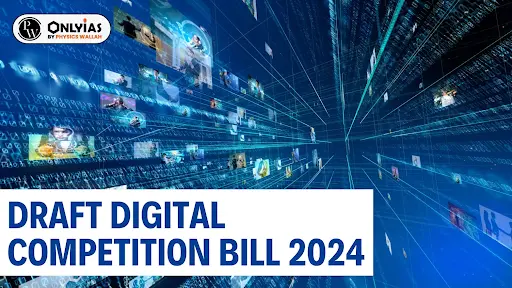Monday, 15th July 2024
Militancy on the rise in Jammu
Why in the news ?
- Recent terrorist attacks in the Kathua district of Jammu and Kashmir (J&K) highlight a significant challenge for the Indian government.
- On July 8, five Army soldiers were killed and five injured in an ambush by militants.
- This incident is part of a troubling trend, with five terror strikes in the Jammu division since June 9, resulting in the deaths of eight security personnel and ten civilians.
- These attacks indicate a shift in militant focus from the traditionally volatile Kashmir Valley to the previously more peaceful Jammu region.
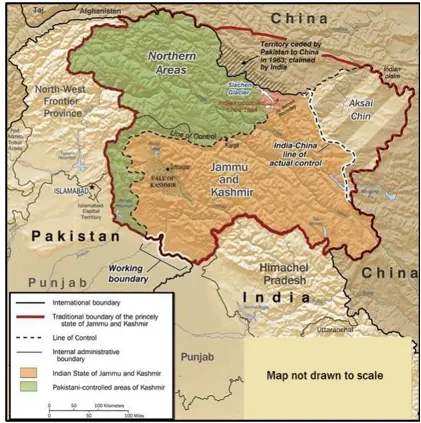
New Pattern Emerging:
- Attempts to Revive Militancy in Jammu Region:
- Past Three Years: The recent attacks reflect a concerning pattern of renewed militancy in the Jammu region over the past three years, particularly in the Chenab Valley and south of the Pir Panjal.
- Affected Districts: Districts such as Doda, Kishtwar, Ramban, Kathua, Udhampur, Reasi, Rajouri, and Poonch have seen a resurgence in militant activity.
- Historical Context:
- While the Kashmir Valley has historically experienced frequent terror incidents, the Jammu belt has been relatively peaceful for the past two decades. This revival of militancy in an area that was a hotbed in the late 1990s and early 2000s has alarmed the security establishment.
- Statistics:
- Jammu Region (Since 2021): 31 terror incidents, resulting in the deaths of 47 security forces and 19 civilians, along with 48 terrorists killed.
- Kashmir Valley (Since 2021): 263 terror incidents, with 68 security forces and 75 civilians killed, and 417 terrorists neutralised.
- Concerning Trend: The increased frequency and targeted nature of attacks on pilgrims and security forces in Jammu are particularly concerning despite the lower number of incidents compared to the Valley.
- Infiltration Routes:
- International Border (IB) and Line of Control (LoC): The 192-km IB along Jammu is secured by the Border Security Force (BSF), while the 740-km LoC in the Kashmir Valley and parts of Jammu is under Army control.
- Terrain and Security Challenges:
- Tough terrain, forested areas along the LoC, and vulnerable patches along the IB may have facilitated fresh infiltration.
- Recent attacks in the Kathua belt, including the July 8 ambush, occurred on an old infiltration route used by militants two decades ago.
Reasons Behind the New Emerging Pattern:
- Thinning of Security Grid Post-Galwan Incident:
- Redeployment of Troops: After the 2020 Galwan clashes in eastern Ladakh, a significant number of Army personnel were redeployed from Jammu to the China border, weakening the security grid in Jammu.
- Increased Vulnerability: Security experts suggest that this has made the region more vulnerable to attacks.
- Two-Front Strain on India:
- Hostile Elements:
- Hostile elements aim to strain India on both the western (Pakistan) and northern (China) fronts.
- With heightened alert in the Kashmir Valley and reduced opportunities for state-sponsored terrorists there, Jammu, with its lowered guard, becomes a more convenient target.
- Hostile Elements:
- Aftermath of Article 370 Abrogation:
- Government Narrative: Following the abrogation of Article 370 in August 2019, the government has touted successes in the Kashmir Valley, evidenced by zero stone-throwing incidents, no strikes, and a tourism boom.
- Challenge to Narrative: Renewed terrorism in Jammu challenges this narrative and might aim to stabilise militant presence in the Valley while stirring insecurity in Jammu.
- Demographic Concerns:
- Communal Tensions: The area's demography also raises concerns about potential communal tensions and social unrest due to these attacks.
- Opportunities for Terrorists:
- Geographical Advantage:
- The Rajouri-Poonch area, with its thinner concentration of security forces, is equidistant from Shopian and Kulgam in Kashmir.
- The LoC with Pakistan, making it easier to move between these regions.
- Logistical Challenges:
- Areas in the Pir Panjal range and to its south are easier to access.
- Any militant crossing over from the lower heights of Jammu has to traverse through multiple high ranges like Pir Panjal before reaching the Kashmir Valley.
- This challenges their logistical preparations and motivation, hence shorter and intense contacts have become the norm in the Jammu region.
- Visibility Strikes:
- Terror incidents away from the Valley, where militant ranks have been staring at a leadership vacuum, are high visibility strikes intended to inflict maximum damage.
- Geographical Advantage:
- Drying Up of Human Intelligence:
- Importance of Human Intelligence:
- One of the reasons forces may have not been able to anticipate the attacks is the drying up of human intelligence or their network of informers.
- Human intelligence is very important in counter-insurgency operations.
- Role of Informers:
- Even with all their reliance on gadgets and smart ways to avoid surveillance, terrorists visit the nearest human settlement to get logistical support for their survival.
- Current Challenges:
- While militants and their network of overground workers continue to exist, the informers are missing.
- Many security experts attribute the dried-up human intelligence to authorities taking the prevailing peace for granted.
- New officers transferred to the region did not work as hard as they should have on their informer network.
- Importance of Human Intelligence:
Way Forward:
- Engaging the Younger Generation: A whole generation that fought the terrorists are in their 60s and 70s now. There is no such connection with the younger generation; it will take time to build that trust with the civilians.
- Reviving Village Defence Guards/Committees (VDGs): The VDGs are being revived in December 2022. They had to be discontinued amid allegations of crimes such as abduction and rape committed by the members.
- Strengthening Human Intelligence: Renew efforts to rebuild the network of informers and improve human intelligence capabilities.
- Enhanced Security Measures: Address the thinning security grid by redeploying sufficient forces to the Jammu region.
- Cross-Border Coordination: Strengthen coordination between security forces along the IB and LoC to prevent infiltration.
- Community Engagement: Engage with local communities to build trust and ensure their cooperation in identifying and reporting suspicious activities.
- Holistic Approach: Implement a comprehensive approach that includes socio-economic development, counter-radicalization programs, and strengthening law enforcement mechanisms to address the root causes of militancy.
Source: TH
India-Russia trade gap and rupee internationalisation
Why in the News?
- India aims to boost bilateral trade with Russia to $100 billion by 2030 to mitigate its rising oil import costs and reduce reliance on the US dollar.
- However, since the Ukraine conflict in 2022, the trade dynamics between India and Russia have skewed, with India facing a substantial trade deficit of $57 billion out of a total bilateral trade of $66 billion in FY24.

Internationalisation of the Rupee
About:
- Definition: Internationalisation of the rupee refers to the process of increasing the usage of India's local currency (INR) in cross-border transactions, aiming to establish it as a widely accepted currency for international trade and investments.
- Objectives: Enhancing acceptance, liquidity, and usability of the rupee in global markets to reduce dependency on dominant currencies like the US dollar and euro.
Steps Taken to Promote International Trade Settlement in Rupees:
- RBI Initiatives:
- In July 2022, RBI introduced additional arrangements for invoicing, payment, and settlement of exports/imports in rupees.
- December 2022 marked India's first settlement of foreign trade in rupees with Russia, demonstrating initial steps towards broader adoption.
- International Banks:
- Banks from 19 countries, including the UK, New Zealand, Germany, Malaysia, Israel, and the UAE, are authorised to conduct settlements in rupees, facilitating global transactions in INR.
How Can India Internationalise the Rupee?
- Economic Survey Insights: FY23 Economic Survey emphasises that increasing the use of the rupee for trade invoicing is crucial for its internationalisation.
- Benchmark: According to the BIS Triennial Central Bank Survey 2022, the US dollar dominates global forex turnover at 88%, while the rupee constitutes only 1.6%.
- Target: To be considered an international currency, the rupee's turnover should ideally reach 4%, aligning with other non-US, non-Euro currencies.
Challenges and Strategies:
- Currency Dominance: Overcoming the dominance of the US dollar poses a significant challenge.
- Market Confidence: Building confidence among global markets in the rupee's stability and reliability for cross-border transactions.
- Geopolitical Factors: Managing geopolitical factors that influence currency preferences and international trade relations.
Future Prospects:
- Strategic Partnerships: Strengthening bilateral trade agreements and partnerships, like those with Russia, to increase rupee-denominated transactions.
- Financial Sector Reforms: Implementing reforms in the financial sector to enhance liquidity and infrastructure supporting rupee settlements.
- Global Visibility: Promoting the rupee's visibility in international markets through enhanced market access and regulatory frameworks
Widening Trade Gap with Russia and Benefits to Yuan:
- China’s Example: Amid Western sanctions, China has capitalised on Russian export opportunities. Trade between China and Russia reached $240 billion in 2023, with 95% settled in local currencies.
- Yuan’s Role: The yuan has become dominant in Russian markets, surpassing the US dollar, due to stable trade relations and balanced trade volumes.
- India’s Challenge: Despite being Russia's top oil importer, India faces difficulties in settling trade in rupees, with Russian oil exporters increasingly preferring yuan payments.
Challenges in Exports to Russia:
- Banking Reluctance: Private banks fear Western sanctions, hindering rupee-based transactions.
- Operational Challenges: Initial issues with the rupee settlement mechanism due to the lack of clear procedures.
- Currency Volatility: Ruble and rupee volatility complicates trade compared to the stable yuan.
Way Forward:
- Trade Cooperation: India and Russia aim to eliminate barriers and negotiate a trade deal with the Eurasian Economic Union (EEU), enhancing industrial cooperation.
- Sector Focus: Emphasis on sectors like transport engineering, metallurgy, and chemicals for joint projects.
- Bilateral Agreements: Discussions on a migration and mobility partnership to strengthen ties.
|
UPSC Civil Services Examination, Previous Year Questions (PYQs) Prelims: Q1. Convertibility of rupee implies (2015)
Ans: (c) Q2. With reference to Balance of Payments, which of the following constitutes/ constitute the Current Account? (2014)
Select the correct answer using the code given below:
Ans: (c) |
Source: IE
Powers of Chief Information Commission
Why in the news ?
- The Supreme Court of India has stated that the Central Information Commission (CIC) has the authority to constitute benches and frame regulations, underscoring the importance of its autonomy for effective functioning.

About Chief Information Commission (CIC):
- Objective:
- The CIC is a statutory body established to ensure transparency and accountability in government functioning, as per the Right to Information Act (RTI) of 2005.
- It empowers citizens to request information from public authorities to promote openness and reduce corruption.
Key Features:
- Establishment and Structure:
- Constituted by the Central Government.
- Consists of the Chief Information Commissioner and up to ten Information Commissioners.
- Appointment:
- The Chief Information Commissioner and Information Commissioners are appointed by the President of India.
- Recommendations are made by a committee consisting of:
- The Prime Minister,
- The Leader of the Opposition in the Lok Sabha,
- A Union Cabinet Minister nominated by the Prime Minister.
- Tenure:
- Hold office for up to five years or until the age of 65, whichever is earlier.
- Functions and Powers:
- Adjudication: Acts as a quasi-judicial body hearing appeals and complaints under the RTI Act.
- Orders public authorities to provide information.
- Imposes penalties on non-compliant officials.
- Ensures compliance with the RTI Act.
- Advisory Role: Advises public authorities on effective implementation of the RTI Act.
- Promotion of RTI: Conducts programs to promote transparency and educate citizens about their right to information.
- Appeal and Complaint Mechanism:
- Citizens unsatisfied with responses from Public Information Officers (PIOs) can appeal to the First Appellate Authority.
- If still unsatisfied, they can file a final appeal or complaint with the CIC.
- Public Authorities' Compliance:
- Public authorities must appoint PIOs and provide information within 30 days.
- The CIC ensures compliance with RTI Act provisions.
Significance of the CIC:
- Enhancing Transparency: Promotes transparency in government operations, making information accessible to the public.
- Empowering Citizens: Provides tools for citizens to seek information and hold the government accountable.
- Curbing Corruption: Reduces corruption and improves governance by ensuring information accessibility.
Supreme Court Ruling:
- The Chief Information Commissioner (CIC) has the authority to form benches and establish regulations for the effective management of the Central Information Commission under the RTI Act, 2005.
- This ruling overturned a previous Delhi High Court decision that had limited the CIC’s powers.
- The Supreme Court emphasised that administrative bodies need autonomy to set and implement internal procedures without restrictive interpretations that could undermine their functions.
- The court advocated for a broader interpretation of the RTI Act, aligning with its goals of promoting transparency and accountability in public authorities.
- The CIC's regulations, regardless of their nomenclature, are essential for effective management and must be respected to maintain the Commission’s autonomy.
- This decision highlights the importance of the CIC’s independence in handling a high volume of RTI cases and ensures it can operate without undue external interference.
|
UPSC Civil Services Examination, Previous Year Question (PYQ) Mains: Q:1 The Right to Information Act is not all about citizens’ empowerment alone, it essentially redefines the concept of accountability.” Discuss. (2018) |
Source: TH
Guidelines to Prevent Stereotyping and Discrimination
Why in the News?
- The Supreme Court of India, in a landmark ruling, issued comprehensive guidelines to prevent stereotyping and discrimination of persons with disabilities (PwDs) in visual media, including films and documentaries.

- The ruling came while hearing a plea to ban the film Aankh Micholi for its derogatory portrayal of PwDs, although the SC did not interfere with the Central Board of Film Certification (CBFC)'s decision to clear the movie for public screening.
SC’s Ruling Against Insensitive Representation of PwDs:
- Authentic Representation: The SC emphasised the need for authentic and respectful representation of individuals with disabilities in films and media.
- Inclusivity and Realism: Highlighted the importance of inclusivity and realism in cinematic portrayals, underlying the societal impact of such representations.
- Creative Freedom Limits: Stated that the creative freedom of filmmakers cannot include the freedom to lampoon, stereotype, misrepresent, or disparage those already marginalised.
- Influence of Cinema: Recognized the influential role of cinema in shaping public perceptions and stressed that inaccurate or stereotypical portrayals can perpetuate harmful misconceptions.
- Constitutional Mandate: Underlined that according to Article 14 of the Indian Constitution, stereotyping is an antithesis of dignity and anti-discrimination rule.
- Distinguishing Humour: Advocated for a clear distinction between ‘disability humour’ which helps in understanding disabilities and ‘disablement humour’ which denigrates it.
Significance of the Ruling:
- Industry and Activist Support: Welcomed by industry insiders and disability rights activists as a crucial step towards changing the narrative around disability in India.
- Alignment with RPwD Act 2016: Aligns with the broader goals of the Rights of Persons with Disabilities (RPwD) Act 2016, which seeks to protect and promote the rights and dignity of PwDs in all spheres of life.
- Human Rights Model: Emphasised the human rights model of disability rights, obliging the government and private parties to facilitate full and effective participation of PwDs in society.
- Model Evolution: Explained the evolution from medical and social models to the human rights model, asserting that people with disabilities are an integral part of society with equal rights.
Shortcomings of the Ruling:
- Abstract Implementation: The human rights model is an abstract idea and difficult to implement.
- Limited Scope: The guidelines are limited to visual media.
- Creative Freedom: The judgement may be seen as limiting the spirit of ‘creative freedom.’
7-Points Guidelines to Prevent Stereotyping and Discrimination of PwDs:
- Avoid Discriminatory Language: Avoid words like "crippled" that lead to institutional discrimination and negative self-image.
- Address Social Barriers: Use language that acknowledges and addresses social barriers faced by PwDs.
- Accurate Medical Information: Ensure adequate and accurate medical information about impairments, avoiding content that increases discrimination.
- Dispelling Myths: Avoid portraying stereotypes, such as depicting impaired persons with enhanced sensory superpowers.
- Inclusive Creation: Adhere to the principle of “nothing about us, without us” by involving PwDs in the creation and assessment of visual media content.
- Consultation with Advocacy Groups: PwDs must be portrayed in visual media after consultation with their rights advocacy groups, as per the convention to protect the rights of PwDs.
- Training and Sensitisation: Implement training and sensitisation programs for content creators to foster respectful and accurate portrayals of PwDs.
|
UPSC Civil Services Examination, Previous Year Question (PYQ) Prelims Q:1 India is home to lakhs of persons with disabilities. What are the benefits available to them under the law? (2011)
Which of the statements given above is/are correct?
Ans: (d) |
Source: TH
‘Next of kin’ policy
Why in the news ?
- Parents of late Captain Anshuman Singh, killed in the line of duty, had alleged that they did not even get to touch the Kirti Chakra presented to their daughter-in-law and sought changes in the Indian Army’s Next of Kin (NoK) criteria for financial assistance.
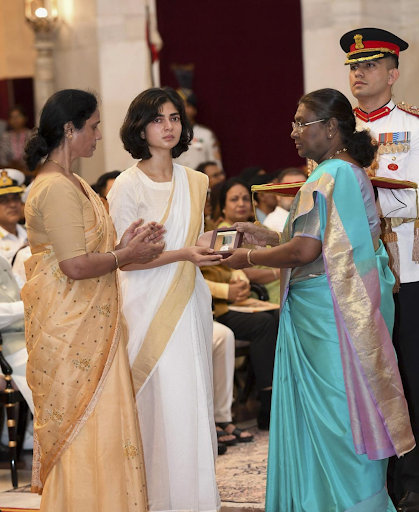
What are NOK rules ?
- Definition of Next of Kin: NOK refers to the closest living relative(s) of an individual, such as spouses, children, parents, and sometimes other close relatives as per organisational policies.
- Order of Priority: NOK rules establish a hierarchy to determine the primary beneficiary. For example, spouses have the highest priority, followed by children, parents, and then siblings.
- Nomination Process: Individuals can nominate their preferred NOK during their lifetime through legal documents like wills or official forms provided by the organisation.
- Legal Standing: NOK rules hold legal significance for inheritance, entitlement to benefits (like pensions and insurance payouts), and receiving official notifications related to the deceased.
- Updates and Changes: It's encouraged for individuals to update their NOK designation with life changes (e.g., marriage, divorce, or birth of children) to ensure the correct beneficiaries are designated.
- Military and Government Policies: In military contexts, NOK rules determine who receives benefits such as pensions, honours, and notifications in case of casualties, varying by military branch, rank, and service.
- Dispute Resolution: Organisations have procedures to handle disputes over NOK designation, especially when multiple parties claim entitlement to benefits or inheritance.
What Captain Anshuman Singh's parents are saying?
- NOK Regulations Dissatisfaction:
- Captain Anshuman Singh's father, Ravi Pratap Singh, considers the current Next of Kin (NOK) regulations as incorrect.
- He asserts that his daughter-in-law, after moving out following his son's death, is now the primary beneficiary.
- Relocation and Documentation:
- The widow relocated her son's official paperwork from Lucknow to Gurdaspur to establish it as the permanent residence for all communications.
- Demand for Revision:
- Ravi Pratap Singh demands a revision to the NOK statute to ensure that parents receive healthcare updates and inherit property alongside the wife in case of a death without a will.
- He emphasises that rules should also be amended to include parents in entitlements like assistance amounts and other government facilities.
- Military Honours:
- He urges the government to provide replicas of military honours to parents as well, not just to the wife, to honour and cherish their son's memory.
- Engagement with Government:
- Ravi Pratap Singh has raised these issues with Defence Minister Rajnath Singh, seeking policy changes to address their concerns.
- Living Arrangements:
- Captain Anshuman Singh's wife no longer lives with his parents. Their marriage was only five months old at the time of his death, and they do not have children.
- Mother's Perspective:
- Captain Singh's mother supports her husband's stance and also calls for a review of NOK regulations to prevent similar hardships for other parents in the future.
The key clarifications provided by Army sources:
- Division of Funds:
- The Army Group Insurance Fund (AGIF) amounting to ₹11 crore was divided between Captain Anshuman Singh's wife and parents. His wife received benefits because she was nominated in his will for these funds.
- Pension Entitlement:
- As per military policy, once an officer is married, the spouse becomes the automatic nominee for the pension. This nomination is part of the standard procedure and does not involve the spouse's active role in the decision.
- Financial Assistance:
- Uttar Pradesh Chief Minister Yogi Adityanath announced ₹50 lakh in aid, with ₹35 lakh allocated to Captain Singh's wife and ₹15 lakh to his parents, reflecting state support for both beneficiaries.
- Service and Sacrifice:
- Captain Anshuman Singh, a Medical Officer stationed at Siachen Glacier, lost his life in July 2023 while courageously rescuing individuals during a fire incident.
- Posthumous Honours:
- He was posthumously awarded the Kirti Chakra for his bravery, presented to his wife and mother at a defence investiture ceremony.
- Next of Kin (NoK) Criteria:
- Captain Singh's parents expressed concerns about their interactions with the Kirti Chakra and called for revisions to the Army's NoK criteria for financial assistance.
- However, officials emphasised that the nomination process for insurance, provident fund, and other assets is determined by the officer's will.
- For pension, the spouse is the default nominee after marriage.
- Nomination Process:
- Upon commissioning, officers nominate their Next of Kin for insurance and other assets. The nomination process is the officer's prerogative, allowing them to specify beneficiaries as per their wishes.
- Execution of Will:
- Captain Anshuman Singh designated his wife as the beneficiary for 50% of AGIF and 100% of Provident Fund (PF), aligning with his wishes outlined in his will.
Source: TH
India Could Soon Allow Weight – Loss Drug Tirzepatide
Why in the News?
- India's expert committee of the drug regulator, CDSCO (under DCGI), has recommended the approval of tirzepatide, a weight loss drug developed by Eli Lilly, marking its debut in the Indian market pending final regulatory clearance.

Development of Various Weight Loss Drugs:
- Significance of Drug Development:
- Recent years have witnessed significant advancements in the development of weight loss drugs, revolutionising the treatment of obesity.
- These innovations have particularly transformed medical practices in the United States and Europe, where obesity rates are notably high.
- FDA Approvals:
- The US Food and Drug Administration (FDA) has granted approvals to several key medications aimed at chronic weight management.
- Notable among these are Wegovy (semaglutide) and Zepbound (tirzepatide), which have been specifically endorsed for use in adults struggling with weight-related issues.
- Target Population:
- These drugs are recommended for individuals falling into the following categories:
- Obese: Defined as having a Body Mass Index (BMI) exceeding 30.
- Overweight: With a BMI ranging from 27 to 30.
- Associated Health Conditions: Patients must also present at least one additional health condition directly linked to their weight status, such as hypertension (high blood pressure), hyperlipidemia (high cholesterol levels), or type 2 diabetes mellitus
About Semaglutide and Tirzepatide Drugs:
- Mechanism: Both semaglutide and tirzepatide are injectable polypeptides that increase levels of GLP-1, a hormone crucial for weight control via appetite regulation.
- Additional Action: Tirzepatide also affects GIP, enhancing weight management effects through brain and fat cell receptors.
- Global Trials: Positive outcomes from global trials, including Indian participants, supported tirzepatide's regulatory approval in India, with a requirement for phase IV trials to monitor side effects post-marketing.
Side Effects and Limitations of Zepbound:
- Prescription Use: Zep Bound is strictly for medical weight management and not cosmetic purposes.
- Common Side Effects: Nausea, diarrhoea, vomiting, constipation, and injection-site reactions are reported.
- Safety Concerns: Potential risks include thyroid tumours and other gastrointestinal and systemic reactions.
- Treatment Complexity: Effective management of obesity requires ongoing use of medications like Zepbound due to the chronic nature of the disease.
Source: IE
NASA's CHAPEA Project
Why in the news ?
- Recently, after completing a year-long simulated Mars mission, a NASA crew emerged from their 17,000 sq ft habitat at Johnson Space Center.

About NASA's CHAPEA Project:
- Full Name: Crew Health and Performance Exploration Analog (CHAPEA)
- Purpose: CHAPEA is a series of analog missions by NASA to simulate year-long stays on Mars.
- Objectives:
- To assess and gather data on NASA’s food system.
- To study physical and behavioural health patterns in humans for future space missions.
- Mission Details:
- Each mission includes four crew members.
- The habitat, Mars Dune Alpha, is a 1,700-square-foot, 3D-printed structure located at Johnson Space Center in Houston, Texas.
- Mars Dune Alpha simulates a realistic Mars habitat to support long-duration space missions.
- Habitat Features:
- Four private crew quarters.
- Dedicated workstations.
- A medical station.
- Common lounge areas.
- Galley and food-growing stations.
- Mission Conditions:
- The analog mission will be Mars-realistic, potentially including environmental stressors such as resource limitations, isolation, equipment failure, and significant workloads.
- Activities:
- The crew will conduct simulated spacewalks.
- They will provide data on various factors, including physical and behavioural health and performance.
- Future Missions:
- Following the successful completion of this mission, two more missions are scheduled for 2025 and 2026
|
UPSC Civil Services Examination, Previous Year Question (PYQ) Prelims: Q.1 In the context of space technology, what is “Bhuvan”, recently in the news? (2010)
Ans: (c) Mains: Q.1 What is the main task of India’s third mood mission which could not be achieved in its earlier mission? List the countries that have achieved this task. Introduce the subsystems in the spacecraft launched and explain the role of the ‘Virtual Launch Control Centre’ at the Vikram Sarabhai Space Centre which contributed to the successful launch from Sriharikota. (2023) Q.2 What is India’s plan to have its own space station and how will it benefit our space programme? (2019) Q.3 Discuss India’s achievements in the field of Space Science and Technology. How the application of this technology helped India in its socio-economic development? (2016) |
Source: TOI
e-office Platform
Why in the news ?
- As part of its 100-day agenda, the Government of India has announced a plan to implement the e-office platform across 133 attached, subordinate offices, and autonomous bodies.

About E-Office Platform:
- Objective: To streamline operations and enhance efficiency across 133 identified offices.
- Leading Ministry: Ministry of Personnel, Public Grievances & Pensions.
- Implementation Partner: National Informatics Centre (NIC) will be the knowledge partner for implementing e-Office.
- Key Components:
- File Management System (eFile): A workflow-based system that improves upon the manual handling of files with a more efficient electronic system.
- Knowledge Management System (KMS): Creates a central repository of documents within an organisation, allowing users to create, manage, and track electronic documents easily.
- Work from Anywhere (WAW) Portal: A one-stop portal for virtual office functions, enabling officials to securely access their office from anywhere.
- Smart Performance Appraisal Report Recording Online Window (SPARROW): A web-based application for processing Annual Performance Appraisal Reports (APAR), allowing employees to fill out their APARs, which are then reviewed by the official hierarchy.
Source: TP
Rosewood Tree
Why in the news ?
- The Convention on International Trade in Endangered Species of Wild Fauna and Flora (CITES) has recently issued guidelines for its members regarding the sustainable harvest and trade of rosewood specimens.
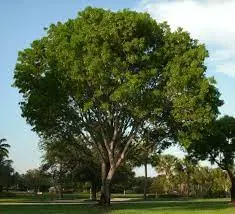
About Rosewood Tree:
- Definition: Rosewood is a commercial term that includes a variety of tropical hardwoods in the Fabaceae (Leguminosae) family.
- Distribution:
- Native to South-East Asia, Papua New Guinea, the Solomon Islands, Sabah, Philippines, Indonesia, and Malaysia.
Indian Rosewood Varieties:
- Dalbergia sissoo (North Indian Rosewood):
- Characteristics: Fast-growing, hardy, deciduous, and crooked tree with long, leathery leaves and whitish or pink flowers.
- Native Range: Foothills of the Himalayas, from Afghanistan to Bihar, India.
- Habitat: Primarily found along river banks above 200 m (700 ft) elevation, ranging naturally up to 1,400 m (4,600 ft).
- Dalbergia latifolia (East Indian Rosewood):
- Common Names: East Indian Rosewood, Black Rosewood, Bombay Blackwood, Indonesian Rosewood, Malabar Rosewood.
- Habitat: Tropical dry deciduous forests, tropical moist deciduous forests, and plains.
- Distribution: India, Nepal, Andaman Islands (India), Malay Peninsula, Indonesia, Himalayas, China, Malaysia.
- Uses: Commonly used for furniture, musical instruments, decorative items, and veneers.
- Conservation Status: Listed in Appendix II of the CITES list.
Key Facts about CITES:
- Objective: Ensures that international trade in wild animals and plants does not threaten their survival.
- Adoption: Adopted in 1973 and entered into force in 1975.
- Membership: 184 member parties regulating trade in over 38,000 species.
- Legal Status: Legally binding on the parties, requiring national implementation without replacing national laws.
- Secretariat: Administered by the United Nations Environment Programme (UNEP) and located in Geneva, Switzerland
Source: DTE
States Must Reconsider Their Demand for Special Category
Context:
- Special Category Status (SCS) has historically addressed regional disparities in India's development landscape, but its relevance is debated in today's changing political and economic environment.
- States aspiring for SCS often push for it without fully evaluating the net benefits and implications.
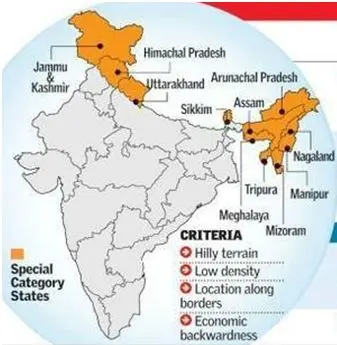
The Concept of SCS:
- Origins and Recommendations:
- SCS was first recommended by the Fifth Finance Commission in 1969 to address regional disparities in development. It was not originally provided for in the Indian Constitution.
- Initial Classification:
- Initially, SCS was granted to states like Jammu and Kashmir, Assam, and Nagaland in 1969. These states were identified as needing special assistance due to their unique challenges.
- Administration and Support:
- Historically, SCS for plan assistance was managed by the National Development Council under the erstwhile Planning Commission. This support included preferential treatment in funding allocations for developmental projects.
- Current Status:
- As of now, eleven states enjoy the Special Category Status. These states are: Assam, Nagaland, Himachal Pradesh, Manipur, Meghalaya, Sikkim, Tripura, Arunachal Pradesh, Mizoram, Uttarakhand, and Telangana.
- Inclusion of Telangana:
- Telangana, being the newest state formed in 2014 after its bifurcation from Andhra Pradesh, was also accorded SCS to aid its initial developmental challenges.
- Funding Model:
- SCS states historically received 90% of centrally-sponsored schemes as grants and 10% as loans, compared to 60-75% grants for other states.
- This model aimed to alleviate financial burdens, allowing SCS states greater flexibility in funding development projects tailored to their needs.
- Parameters (Based on Gadgil Formula):
- Hilly Terrain;
- Low Population Density and/or Sizeable Share of Tribal Population;
- Strategic Location along Borders with Neighbouring Countries;
- Economic and Infrastructure Backwardness; and
- Nonviable Nature of State finances.
Additional Benefits of Special Category Status:
- Concession in Taxes:
- Excise Duties: SCS states receive significant relief in excise duties, reducing the tax burden on local industries and promoting industrial development.
- Customs Duties: Concessions in customs duties lower the cost of imported raw materials, making it more economical for businesses to operate and expand in SCS states.
- Attractiveness for Investment: Lower tax rates enhance the attractiveness of SCS states for both individuals and businesses, encouraging investment and the establishment of new enterprises.
- Higher Central Plan Status:
- Financial Assistance: SCS states receive 90% of centrally sponsored scheme funds as grants, significantly reducing their financial burden compared to other states.
- Flexibility in Fund Utilisation: This funding structure provides flexibility to SCS states in utilising funds for various developmental projects tailored to their specific needs and challenges.
- Enhanced Financial Transfers
- Tax Devolution: The Finance Commission ensures a higher share of central taxes is transferred to SCS states, compensating for their developmental lag and geographical disadvantages.
- Support for Budgetary Deficits: SCS states benefit from favourable consideration of their budgetary deficits, receiving additional financial support to maintain essential public services and infrastructure projects.
Transition from Planning Commission to NITI Aayog;
- Mechanism Change: With the replacement of the Planning Commission by NITI Aayog, the central plan assistance mechanism shifted to the Finance Commission. Specific schemes remain managed directly.
- Objective Continuity: Despite structural changes, the core objective of supporting underprivileged states remains intact.
- Streamlined Allocation: The transition introduced a more streamlined and accountable process for fund allocation, emphasising performance-based incentives and outcomes.
Impact on Special Category Status (SCS) States:
- Continued Benefits: SCS states continue to benefit from financial support and tax concessions, crucial for their development.
- Development Trajectories: These benefits play a significant role in shaping the development trajectories of SCS states, ensuring sustained support for their unique challenges.
Recommendations of the 14th and 15th Finance Commissions
- 14th Finance Commission
- Acknowledgment: While not explicitly addressing SCS, the 14th FC acknowledged demands by proposing higher allocations for northeastern states, Uttarakhand, and Himachal Pradesh.
- Special Grants: Special grants were sanctioned to address specific challenges faced by these states, maintaining a focus on regional disparities.
- 15th Finance Commission
- Omission of SCS: The 15th FC did not mention SCS explicitly but allocated 10.5% of devolved taxes to northeastern and hilly states, which account for only 5.2% of the population.
- Population Data Change: Shift from using 1971 Census to 2011 Census data increased shares for SCS states (except Himachal Pradesh) due to higher population growth.
Challenges and Future Considerations for Special Category Status (SCS):
- Political Controversies and Bargaining
- Political Tool: SCS has increasingly become a tool for political bargaining, driven by regional parties influencing central policies.
- Impact on Assessment: Politicisation complicates the objective assessment of genuine developmental needs in states, focusing more on political gains.
- Fiscal Implications
- Budgetary Constraints: The central government faces challenges in balancing support for SCS states with other fiscal responsibilities.
- Equity Concerns: Allocation of substantial funds to SCS states may be perceived as unfair by other states, leading to regional tensions and calls for re-evaluation of benefits.
- Administrative Challenges
- Effective Utilisation: Ensuring effective use of allocated funds and benefits by SCS states is critical for developmental impacts.
- Transparency and Accountability: Robust frameworks are needed for transparent fund allocation, regular audits, and assessments to ensure benefits reach intended recipients.
- Establishing Clear, Updated Criteria
- Inclusive Framework: Criteria for SCS should consider economic performance, social development indices, and ecological vulnerabilities.
- Regular Review: A mechanism for periodic review and updating of criteria is essential to address evolving challenges and ensure relevance.
- Strengthening Institutional Mechanisms
- Transparency and Monitoring: Strengthening institutional mechanisms for transparency, accountability, and monitoring of fund utilisation.
- Capacity Building: Building state government capacities to efficiently manage and implement projects under SCS, maximising developmental impacts.
Conclusion:
The future of Special Category Status in India hinges on addressing current challenges through updated and transparent frameworks. By mitigating politicisation, ensuring equitable fiscal management, and enhancing administrative capabilities, SCS can continue to promote balanced regional development.
The focus must remain on fostering equitable growth, maintaining transparency, and ensuring accountability to achieve socio-economic transformation in underprivileged states.
Source: IE
Share the article
Edukemy’s Current Affairs Quiz is published with multiple choice questions for UPSC exams
MCQ
Get Latest Updates on Offers, Event dates, and free Mentorship sessions.

Get in touch with our Expert Academic Counsellors 👋
FAQs
UPSC Daily Current Affairs focuses on learning current events on a daily basis. An aspirant needs to study regular and updated information about current events, news, and relevant topics that are important for UPSC aspirants. It covers national and international affairs, government policies, socio-economic issues, science and technology advancements, and more.
UPSC Daily Current Affairs provides aspirants with a concise and comprehensive overview of the latest happenings and developments across various fields. It helps aspirants stay updated with current affairs and provides them with valuable insights and analysis, which are essential for answering questions in the UPSC examinations. It enhances their knowledge, analytical skills, and ability to connect current affairs with the UPSC syllabus.
UPSC Daily Current Affairs covers a wide range of topics, including politics, economics, science and technology, environment, social issues, governance, international relations, and more. It offers news summaries, in-depth analyses, editorials, opinion pieces, and relevant study materials. It also provides practice questions and quizzes to help aspirants test their understanding of current affairs.
Edukemy's UPSC Daily Current Affairs can be accessed through:
- UPSC Daily Current Affairs can be accessed through Current Affairs tab at the top of the Main Page of Edukemy.
- Edukemy Mobile app: The Daily Current Affairs can also be access through Edukemy Mobile App.
- Social media: Follow Edukemy’s official social media accounts or pages that provide UPSC Daily Current Affairs updates, including Facebook, Twitter, or Telegram channels.


